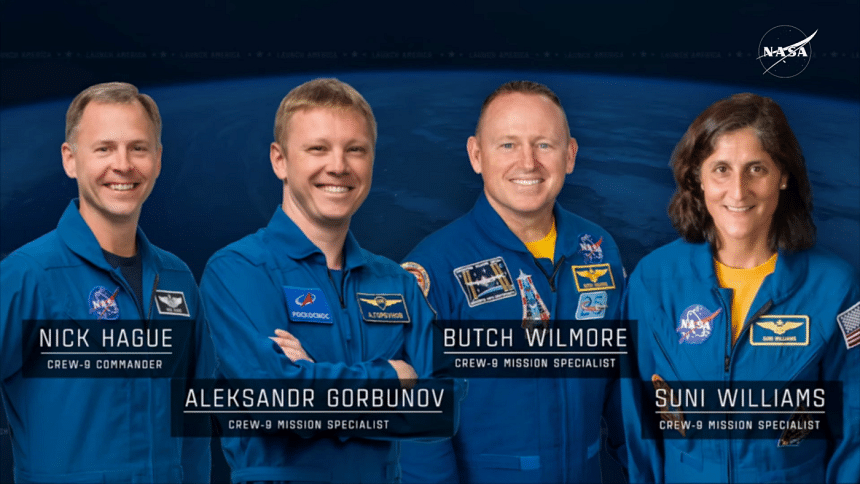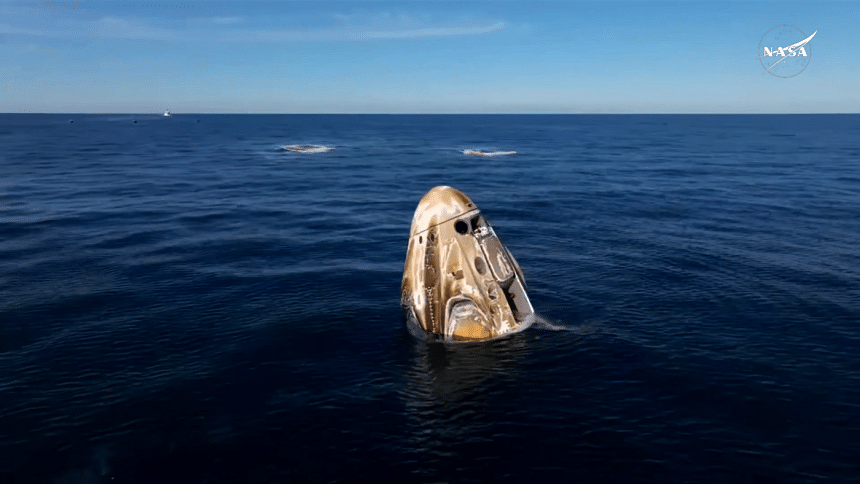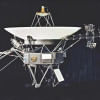Back to Earth after 9 months: What happened to the NASA astronauts

After an unexpectedly prolonged mission aboard the International Space Station (ISS), NASA astronauts Sunita Lyn "Suni" Williams and Barry Eugene "Butch" Wilmore have finally returned to Earth on March 18.
What was originally planned as an eight-day mission stretched into nine months, marking one of the longest space flights for a NASA crew in a single mission. The astronauts launched on June 5, 2024, aboard Boeing's Starliner Calypso, but their return was delayed due to thruster malfunctions and helium leaks that made the spacecraft unsafe for re-entry. As a result, NASA decided to keep them on the ISS until a safe alternative was arranged.
Their journey back to Earth was facilitated by SpaceX's Crew-9 mission, which successfully splashed down off the coast of Florida at 5:57 PM ET (around 3.57 AM Bangladesh time) after undocking from the ISS earlier in the day. Their journey back to Earth was facilitated by SpaceX's Crew-9 mission, which successfully splashed down off the coast of Florida at 5:57 PM ET (around 3.57 AM Bangladesh time) after undocking from the ISS earlier in the day. As they splashed down in the water, dolphins were seen swarming the area as if they were welcoming the astronauts back to Earth. The welcoming team then navigated the spacecraft into a secure area so that the astronauts could get out of the spacecraft.
Alongside Williams and Wilmore, Russian cosmonaut Aleksandr Gorbunov and NASA astronaut Nick Hague also made the return journey. NASA's Nick Hague and Roscosmos cosmonaut Aleksandr Gorbunov were sent to the ISS in September 2024 in a Dragon spacecraft. The two-member crew was sent instead of four which are usually sent for their safe return.
NASA's live coverage of the re-entry showed the Dragon spacecraft deploying its parachutes before safely landing in the ocean. Recovery crews swiftly began the process of retrieving the capsule and its occupants. As the mission commander, Nick Hague expressed his excitement over the successful return, describing the ride as a remarkable experience, with the crew visibly relieved and smiling with their thumbs up as they returned to Earth.

A timeline of the extended mission
After multiple delays, Boeing's Starliner launched on June 5, 2024, carrying Sunita and Barry. Their initial return was scheduled for June 14, but the mission took an unexpected turn. The spacecraft successfully docked at the International Space Station (ISS) on June 6, beginning what was intended to be a short stay. However, by June 11, NASA detected five small helium leaks in the Starliner and decided to extend the mission to June 18 to assess the issue.
As the technical problems persisted, NASA announced in August 2024 that Barry and Sunita would have to return on a different spacecraft in 2025, while Starliner would make its journey back to Earth uncrewed. A few weeks later, on September 7, Starliner landed uncrewed at White Sands Space Harbor in New Mexico.
A possible return option emerged on September 29, when a SpaceX spacecraft arrived at the ISS for a scheduled six-month mission. Two spare seats were allocated for Barry and Sunita, offering a clear pathway home. Originally, the plan was to make their return in February 2025 which was later delayed to March.
On March 14, 2025, a replacement crew launched on SpaceX's Crew-10 mission from Kennedy Space Center, setting the stage for Barry and Sunita's departure. Two days later, on March 16, Crew-10 docked at the ISS, completing the crew handover. On March 17, the astronauts successfully began travelling back to Earth after nine months.

The toll of space on the human body
Spending 288 days in microgravity presents significant physical and physiological challenges. The absence of Earth's gravity weakens bones and muscles, causes fluids to shift within the body, and can lead to vision impairments. Astronauts on extended missions experience muscle atrophy due to the lack of weight-bearing activity, requiring them to engage in daily exercise routines to mitigate the effects.
Earlier last year, NASA officials confirmed that Sunita and Barry transitioned to long-duration exercise regimens, including cardiovascular workouts and resistance training, to maintain their strength.
Although the ISS is partially shielded by Earth's magnetosphere, astronauts receive significantly higher radiation doses compared to those on Earth. Long-term exposure increases the risk of cancer, cognitive decline, and cardiovascular issues. Astronauts lose approximately 1% of their bone mass per month, equivalent to a year of aging on Earth. NASA researchers will closely monitor Williams and Wilmore to assess any lasting health impacts from their extended stay in space.
Adjusting back to life on Earth
After nearly a year in orbit, returning astronauts face both physical and psychological readjustments. The transition from weightlessness to Earth's gravity can cause dizziness, balance issues, and cardiovascular adjustments. Muscle weakness and bone loss mean that walking and performing routine tasks can be challenging in the initial days.
In addition to physical adaptations, astronauts must reacclimate to Earth's atmosphere and sensory environment. On the ISS, there is no natural sunlight, no fresh air, and no conventional day-night cycle. NASA provides astronauts with extensive post-mission rehabilitation, including medical evaluations, strength training, and neurological assessments to help them regain full functionality.

Mission implications for future space exploration
The prolonged stay of Williams and Wilmore highlights the potential risks and challenges of deep-space exploration, particularly for future missions to Mars. The ISS orbits at 354 kilometres (220 miles) from Earth, whereas the average distance to Mars is 225 million kilometres (140 million miles). Extended exposure to microgravity, radiation, and isolation will be key concerns for space agencies planning interplanetary missions.
However, this is not the longest period of time when an astronaut stayed in space. NASA astronaut Frank Rubio currently holds the record for the longest NASA mission, having spent 371 days on the ISS. The all-time record for a single spaceflight is held by Russian cosmonaut Valeri Polyakov, who remained aboard the Mir space station for 437 consecutive days.
With future plans for Mars missions and longer stays on the lunar surface, data gathered from Williams and Wilmore's extended mission might provide valuable insights into the physiological and psychological demands of deep-space exploration. For now, after nearly nine months away from home, the astronauts have returned to solid ground, ready to begin the complex process of recovery and reintegration into life on Earth.

 For all latest news, follow The Daily Star's Google News channel.
For all latest news, follow The Daily Star's Google News channel. 








Comments